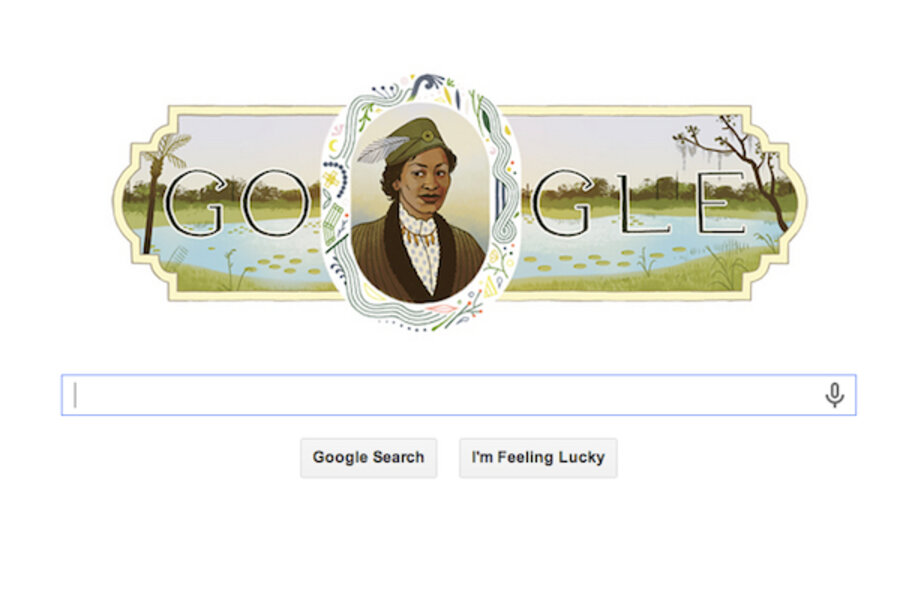This Doodle from January 2014 was a groundbreaking choice for Google – it was the first US Google Doodle that featured a black female author.
It was also another mark of literary permanency for Zora Neale Hurston, a complete transformation from where her novels stood when she died in 1960. She almost slipped into literary obscurity before being pioneered by Alice Walker, author of “The Color Purple,” who was struck by Ms. Hurston’s novel “Their Eyes Were Watching God” for its colloquial writing style, ahead-of-its-time themes, and emphasis on folklore.
Google’s Doodle paid homage both to her work and the author herself. The Doodle featured an illustrated portrait of Hurston, framed by a lively paisley border, set against a central-Florida scene with palm trees, hanging moss, and a small pond, in reference to her childhood home and resting place near Eatonville, Fla.
Though an unconventional choice for Google, which tends toward white, male authors of classic novels, perhaps it signals the tech company’s commitment to diversity, and growing interest in taking people and ideas from relative obscurity and give them the attention Google believes they deserve (think the recent Nest or Boston Dynamics acquisition).








